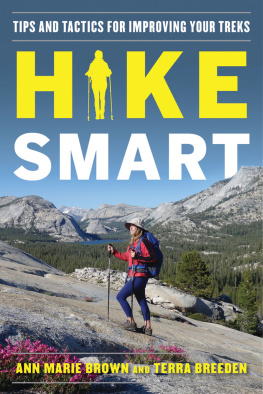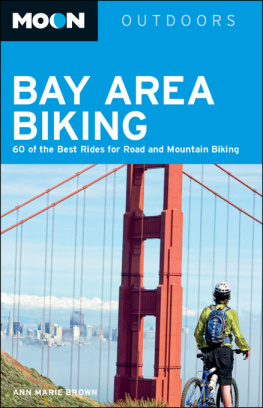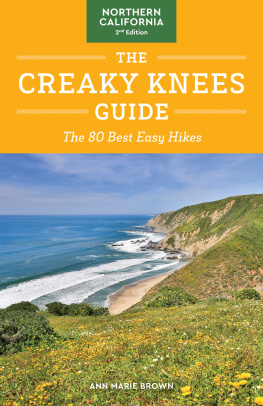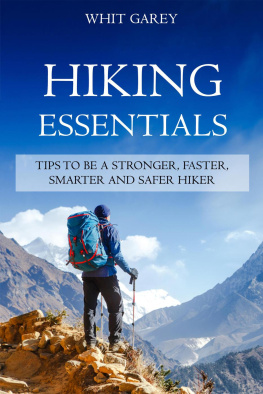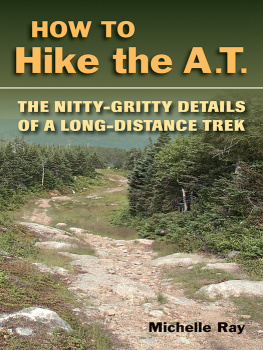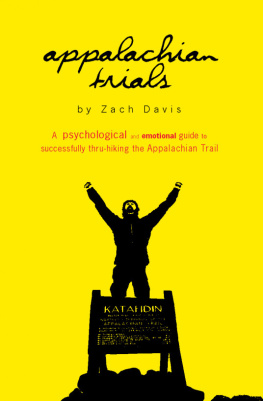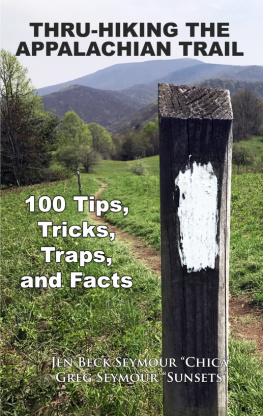Copyright 2017 by Ann Marie Brown and Terra Breeden
All rights reserved. No part of this book may be reproduced in any manner without the express written consent of the publisher, except in the case of brief excerpts in critical reviews or articles. All inquiries should be addressed to Skyhorse Publishing, 307 West 36th Street, 11th Floor, New York, NY 10018.
Skyhorse Publishing books may be purchased in bulk at special discounts for sales promotion, corporate gifts, fund-raising, or educational purposes. Special editions can also be created to specifications. For details, contact the Special Sales Department, Skyhorse Publishing, 307 West 36th Street, 11th Floor, New York, NY 10018 or .
Skyhorse and Skyhorse Publishing are registered trademarks of Skyhorse Publishing, Inc., a Delaware corporation.
Visit our website at www.skyhorsepublishing.com.
10 9 8 7 6 5 4 3 2 1
Library of Congress Cataloging-in-Publication Data is available on file.
Cover design by Tom Lau
Cover photo by Ann Marie Brown
All photos by Ann Marie Brown
Print ISBN: 978-1-5107-0851-8
Ebook ISBN: 978-1-5107-0852-5
Printed in China
Table of Contents
Acknowledgments
W ed like to thank the many people who offered up their hiking and adventure stories for this book. All the people we interviewed were incredibly generous with their time, insights, and honesty. Many of them are our long-time friends; others were strangers before this book was written but have since become friends. The list includes Laura Van Antwerp, Mason Brutschy, Stephanie Coates, Maralana Fulton, Brian Gass, Rosie Hackett, John Kleinfelter, Harriot Manley, Kip Myers, Erica Nelson, David Orr, Adam Peters, Richard Platt and his son John Platt, Suzanne Roberts, Jack Scheifly, Scout Sorcic, Kerri Stevenson, Kim Wyatt, and Katie Zanto.
Wed also like to offer a special thank you to the search-and-rescue professionals who spent many hours offering up their knowledge and expertise, answering pesky questions, and patiently explaining their fascinating work. These people had a lot more important things to do than talk to us, and yet they willingly put those things aside for this book. A huge thank you goes out to Michael St. John and Bob Gehlen of Marin County Sheriffs Office Search and Rescue, John Platt of Valley Search and Rescue, and Lisa Whatford and Chris Kozlowski of El Dorado County Search and Rescue. Thank you for all that you do.
Introduction
E ach year, thousands of hikers and backpackers have wonderful trips in Americas backcountry. They rejuvenate their souls and find relief from the noise, crowds, and hectic pace of our urbanized lives, all while reveling in natures beauty.
Every year, however, hikers experience mishaps in the outdoors. These range from the mildly uncomfortablelike not having enough snacks or getting blisters on your feetto moderately scarylike getting lost or running out of water. Sometimes relatively small problems escalate to become downright disasters, like when hikers get injured or become so disoriented that they cant find their way out.
In the course of writing this book, we found that even the most experienced hikersincluding search-and-rescue professionals, outdoor leadership instructors, and backcountry guideshad a wealth of tales about the errors they made (and learned from). It became clear to us that even trail-hardy experts are often just one misstep away from having their photo appear on the evening news.
Fortunately, every mistake that someone makes on the trail gives the rest of us a chance not to fall victim to that same error. We can learn from each other, improve our skills, and get smarter. And thats what this book is about. It includes lots of tips and techniques for better hiking trips, but perhaps more importantly, it details the personal narratives of people who made a wrong turn or committed an unfortunate error, but ultimately learned a valuable lesson in the process.
It would seem dishonest to leave out my own (Ann Maries) hiking mishap from this book, so here goes: In 2001, I was on a solo road trip, traveling around and hiking different trails every day. When I was on the trail, I carried a full pack with all the hiking essentials as well as a few extras, like a cell phone, extra clothing, and some basic first aid supplies.
One afternoon, I walked about four miles from my car. My trail reached a stream crossing about three feet wide. I jumped acrossa simple movement I had executed hundreds of times beforebut when I landed on the far side, my right foot slipped on wet granite, and my ankle twisted around as I fell. As soon as I hit the ground, I felt a sharp pain and thought, I just broke bones .
The pain was severe enough to make me dizzy, but I was sitting just inches from the creek, so I reached my hands into the cold water and splashed my face. Dont faint , I ordered myself. It seemed critically important that I stay focused.
I took off my hiking boot and assessed my ankle. It wasnt pretty. I felt the urge to faint again, so I splashed more cold water on my face, then reached for one of my hiking poles and tried to use it to stand up. It was immediately clear that my right leg could not bear any weight. This was bad.
I pulled out my cell phone and turned it on, but there was no signal.
I decided to rest a while and try to regain my mental equilibrium. I ate a snack from my pack and drank some water. I assessed my situation: Since I was road-tripping, no one knew exactly where I was, or that I had gone hiking that day. I was on a trail that was not frequently used; in fact, on my hike in I had noticed how overgrown the vegetation was. In some places, it almost covered the trail. My car was parked alongside the road, but this was a seldom traveled country road. It might take a while before someone noticed that a blue Toyota hadnt moved in a few days.
It was mid-afternoon, and I had a few good hours of daylight left. My pack had enough supplies in it so that I could spend the night without risk of hypothermia, but it would be an uncomfortable night. My ankle was getting bigger and uglier by the minute.
I added it all up and figured that since no one was coming to rescue me, I might as well try to get back to my car. Walking was out, so Id have to crawl. I wrapped some extra clothing around my knees and hands for protection and gave it a shot.
Until youve tried it, you cant understand how inefficient crawling is. It takes what seems like forever to go 100 yards. Its exhausting, too, especially for your back and arms. So you stop and rest a while. You check your cell phone again to see if youve miraculously gotten a signal, and then you crawl another 100 yards. In an hour or two, the clothing that youve wrapped around your hands and knees is shredded and torn, no longer protecting you from the rocky trail.
So it went for a couple of hours, at which point I had traveled maybe a half mile. I still had a long way to go, but I told myself Id go another half mile and then stop and sleep for the night. I had a Mylar emergency sleeping bag, and I trusted its insulating properties to keep me alive. I even had some naproxen in my pack, which would work as a bedtime painkiller.
Id like to say that I was feeling mentally tough, and that I knew I would get out of there safely. But I was feeling stupid. I was mentally kicking myself for going on this hike without telling anyone, without even leaving a note in my car. I had made a rookie error, and I wasnt even a rookie. I was also mad at myself for being clumsy and falling. And I was a little worried about wildlifeI knew this was prime mountain lion territory, and I was pretty sure I had spotted tracks in the mud by the creek.

